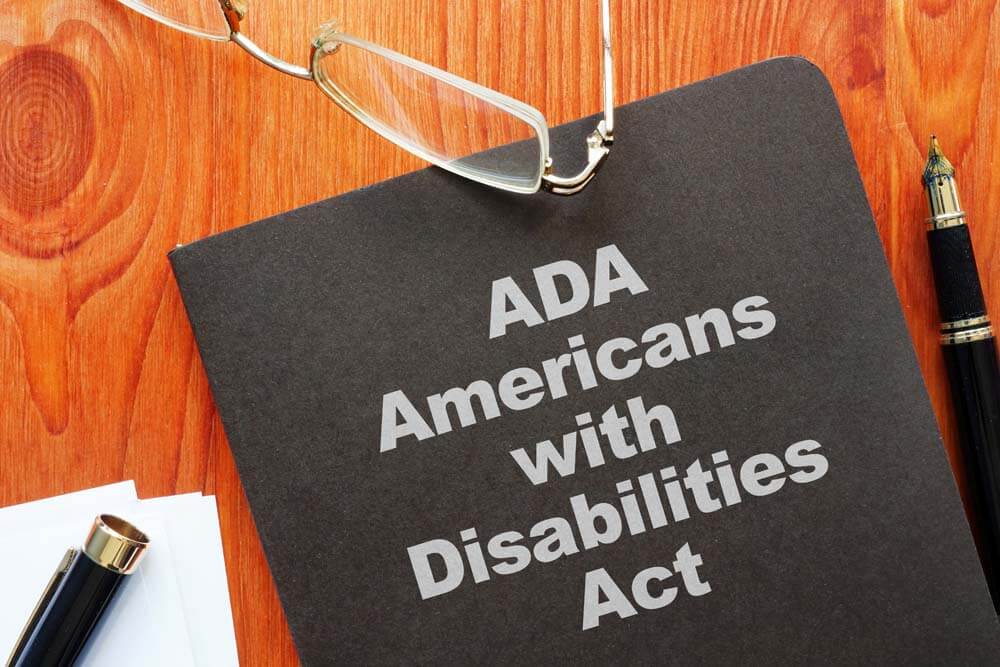Is your website in compliance with the Americans With Disabilities Act (ADA)? If not, yours is among the 97% that aren’t. Does this mean there’s no reason to be concerned? Not at all. Read on and you’ll see why.
What is the ADA?
Per the ADA website, “The Americans with Disabilities Act (ADA) protects people with disabilities from discrimination.”
What Does The ADA Have To Do With Websites?
While the ADA does not specifically refer to websites, the Department of Justice has taken the position that the ADA does apply to websites. This means all websites have be in compliance with the ADA. To make matters confusing, the DOJ has issued no regulations concerning what constitutes compliance. The standard is merely that all websites have to be accessible to people with disabilities covered under the ADA. In the absence of a standard, many website developers are looking to the Web Content Accessibility Guidelines (WCAG). Take a minute to look over these guidelines. If they don’t make your head spin, nothing will.
Why You Should Bring Your Website Into Compliance ASAP?
As of now, no agency of the Federal government is checking websites for compliance and sending out sensible warnings, such as, “Your website does not appear to be ADA compliant. Please make your website ADA compliant within 90 days, or you may be subject to a fine of $XXX. Etc., etc. etc.” Instead, unscrupulous attorneys are surfing the web, searching for sites that are in violation and filing lawsuits against those businesses. An article in The New York Law Journal calls this “the “shake down” litigation market.
To give you a feel for the size of the problem, a single attorney in a single state has brought lawsuits against over 300 different businesses on behalf of only two plaintiffs. Channel 8 News in Tampa, Florida, did a story on this several years ago called “Businesses ‘sitting ducks’ for lawsuits because websites aren’t ADA compliant.” Since then things only gotten worse.
What If You’ve Already Received A Summons?
If you’re thinking you can defend yourself against these lawsuits, think again. A mass of court rulings shows that they are as indefensible as a speeding ticket, with chances of winning being close to nil. Unless you’re the one exception, all you’ll get by going to court is a judgement in favor of the plaintiff and an order to pay 100% of the plaintiff’s legal fees and associated costs, which will cost you a bundle. The only rational alternative is to deal with the plaintiff’s attorney to reach an out-of-court settlement, which, according to experts cited in the Channel 8 news investigation, will cost you between a few thousand to $20,000.
If you’re not convinced you’ll lose in court, you may want to read these articles by some top attorneys:
Effective Defense Against An ADA Lawsuit–Is There Such A Thing?
How Businesses Can Defeat Website Accessibility Lawsuits
Practical Strategies for Defending ADA Website Accessibility Claims
Though the titles appear to be hopeful, the substance of the articles isn’t.
How Do You Bring Your Website Into Compliance?
This is the toughest part of all. As there’s no standard set by the Federal Government, you’re safest following the Web Content Accessibility Guidelines (WCAG). Here are a few excerpts from the guidelines:
- Provide text alternatives for any non-text content so that it can be changed into other forms people need, such as large print, braille, speech, symbols or simpler language.
- Captions are provided for all prerecorded audio content in synchronized media, except when the media is a media alternative for text and is clearly labeled as such.
- The visual presentation of text and images of text has a contrast ratio of at least 4.5:1, except for the following . . .
- All functionality of the content is operable through a keyboard interface without requiring specific timings for individual keystrokes.
- Web pages do not contain anything that flashes more than three times in any one second period.
To do a quick check of your website’s current compliance, use the free WAVE Web Accessibility Evaluation Tool.
Very Important! Add An Accessibility Statement To Your Website
This is something you should do immediately. The Web Accessibility Initiative explains the importance of the accessibility statement, which is to:
- Show your users that you care about accessibility and about them
- Provide them with information about the accessibility of your content
- Demonstrate commitment to accessibility, and to social responsibility
To view WAI’s step-by-step guide on how to develop your accessibility statement click here.
Federal Tax Incentives For Bringing Your Website Into Compliance
- Tax Credit: The amount of the tax credit is equal to 50% of the eligible access expenditures in a year, up to a maximum expenditure of $10,250. There is no credit for the first $250 of expenditures. The maximum tax credit, therefore, is $5,000. For more info in downloadable PDF form, go to this link.
- Tax Deduction: The tax deduction, established under Section 190 of the Internal Revenue Code, is now a maximum of $15,000 per year. For more info in downloadable PDF form, go to this link.
Got Questions?
If you have questions about bringing your website into ADA compliance, feel free to schedule a Free Consultation with us. Or give us a call at 425-298-3303. We’re happy to help in any way that we can.





